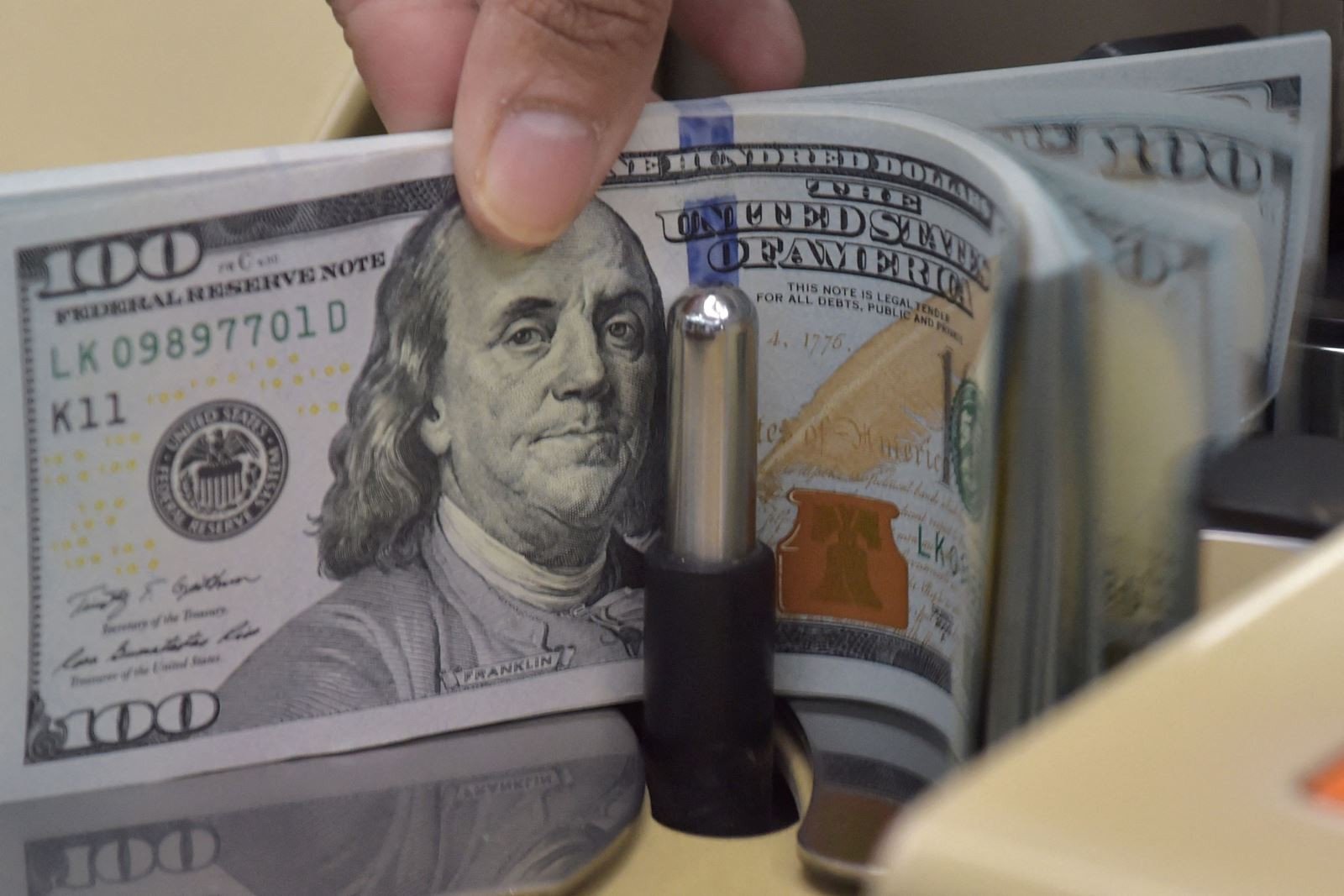
At the weekend trading session on February 23, the central exchange rate between Vietnamese Dong (VND) and US Dollar (USD) was announced by the State Bank at 23,996 VND/USD, compared to the beginning of the week, the central exchange rate between VND and USD increased by 37 VND.
With the +/- 5% margin currently applied, the ceiling rate applied by banks is 25,195 VND/USD and the floor rate is 22,796 VND/USD.
At commercial banks, the greenback price at BIDV on the weekend was listed at 24,445 - 24,755 VND/USD (buy - sell). Thus, the greenback price at this bank increased by 85 VND in both buying and selling compared to the beginning of the week.
The USD price at Vietcombank is listed at 24,420 - 24,760 VND/USD (buy - sell). Last week, the USD price at this bank increased by 110 VND for buying and 80 VND for selling compared to the beginning of the week.
In the world market, the Dollar Index (DXY), which measures the USD against 6 major currencies (EUR, JPY, GBP, CAD, SEK, CHF), stopped at 103.93 points - down 0.02% compared to trading on February 23.
The dollar index fell 0.1% in the final trading session of the week, marking its first weekly decline in nearly two months. US government bond yields also fell this week.
US Federal Reserve Governor Christopher Waller expressed his “no rush” to cut interest rates on February 22, reinforcing investors’ confidence that US interest rates will not fall before June 2024. Minutes of the Fed’s most recent meeting showed that most policymakers were concerned about the risks of cutting interest rates too soon.
The dollar could benefit from divergence with other countries as the US economy appears more resilient, said Noel Dixon, senior macro strategist at State Street Global Markets in Boston.
However, after the recent rally, there are a number of factors that are holding the dollar back. “For the greenback to break out one way or another, we need to see more economic data,” he added. Dixon said the dollar could also be supported by economic weakness in other regions, including Canada and Australia, which could prompt other central banks to cut interest rates ahead of the Fed.
US data on February 23 showed that the number of applications for unemployment benefits unexpectedly fell last week, while US business activity cooled in February. Existing home sales also rose 3.1% in January to a seasonally adjusted annual rate of 4 million units, the highest level since August last year.
Fed officials have projected three 25-basis-point cuts this year, while markets have priced in seven.
Recent data showing higher-than-expected US consumer and producer prices also dampened speculation about the possibility of an early US interest rate cut.
Atlanta Fed President Raphael Bostic said more data is needed to confirm that inflation pressures are actually easing. He said summer could be the time to cut interest rates.
Traders are pushing back the timing of the Fed rate cut from March to June. According to the CME Fed Watch Tool, the market is pricing in a 74% chance of a rate cut in June.
TH (according to Tin Tuc newspaper)Source






























































































Comment (0)